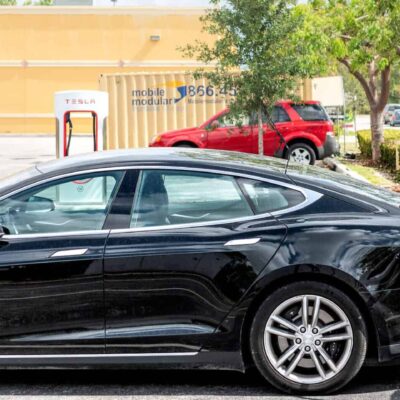What’s to come in the wireless sector for 2024? We asked WIT wireless expert Dr. Muriel Medard to evaluate the industry with regard to 5G technology, industry innovation, and more. Here’s what she had to say about the evolving legal landscape.
WIT: After a busy 2023 on campus, at conferences, and working with counsel, where do you think litigation will lie for the wireless industry in 2024?
Dr. Medard: The cross-licensing trend we saw last year has gained momentum, including in international cross-licensing. We are also seeing issues around actual use popping up in damages. For example, if a technology is considered standard-essential but is not actually deployed, or deployed but seldom used, what are the damages? This is something we had discussed some time back and we are seeing those arguments now being made in cases. We are also seeing more activity around very specific technical aspects in hardware, creating a need to delve deeply into the minutiae of the technology.
One trend stemming from 5G expansion across sectors is that in some industries, the same case is brought from one set of companies to another for essentially the same infringement claim argument. Sometimes they are successful at the start because they may begin with entities that are used to settling. However, as they move on to others, they may fight infringement claims. For example, some NPEs had success with certain industries that were more prone to settle and then moved on to others that fought back and, in some cases, won. I think that this may make some of the companies that traditionally settled more likely to reconsider after they see that the same claim brought against other companies was lost, with cases being tossed out.
WIT: What trends do you see arising in the world of 5G? Do you predict any movement on 6G in 2024?
Dr. Medard: The new versions of 5G have been moving closer to what the original 5G vision was, with still some clear gaps, particularly in terms of low latency and reliability, which is still not at the level that was originally envisaged. There is movement in the 6G direction, but the delays in 5G roll-out may induce delays in the deployment of 6G. Much of the vision for 6G still needs to distinguish itself from 5G.
The move to open radio access networks (O-RAN), which should allow a carrier to have multiple vendors that are interoperable, rather than a closed proprietary system, has made headlines, but there is still a very large component of proprietary design. The tension between the two is an ongoing theme, and the vision for 6G at this point reflects that unfinished business.
Additionally, there is a move towards making 6G more modular, but that, in a way akin to the O-RAN matter, runs counter to the prior way of deploying technology, which relies on rather monolithic systems where a couple of players can, in effect, entirely block the entry of a technology. That is somewhat behind discussions of a possible split in standards.
WIT: As the 5G spectrum continues to evolve (and move towards a 6G launch), what issues do you think may affect the industry?
Dr. Medard: One of the topics of discussion in 6G is whether international standards will remain, as there is the possibility of breaking up standards in different regional areas, as I referred to previously. Some players have been moving pre-emptively to try to block new technologies, usually to maintain their existing dominant position. Unsurprisingly, other entrants, particularly those in Asia who have been investing in newer technologies, are eager to introduce them, possibly on a more stand-alone basis. This may lead to at least a partial split in standards, which many companies and governments think may be destructive overall to the industry. It will, if it happens, fragment the IP landscape in new and unexplored ways.
WIT: Speaking of IP, do you see any new patents entering the arena involving wireless connections?
Dr. Medard: In the wireless industry, the 5G/6G ecosystem is experiencing various emerging trends, such as the integration of networking and physics in frequency management and the focus on connections to transceivers in optics for fiber-wireless systems. The push towards O-RAN is leading to patents addressing transport layer inefficiencies and promoting network slicing as a significant area for patenting. However, there is a challenge in the haziness of inventions, as goals are often aspirational with limited enablement, and the literature on quality of service (QoS), quality of experience (QoE), and service level agreements (SLA) are becoming increasingly relevant but difficult to fully verify.
In decoding, the value of traditional error-correction coding patents is likely to decrease, while there is renewed interest in methods such as product codes and a rise in universal decoding patenting. Advances in channel measurements, joint sensing and communications, and the optimization of modulation/demodulation, particularly with machine learning, are leading to new capabilities and challenges in patenting. The use of reflective surfaces (RIS) is complicating multi-input multi-output (MIMO) antenna systems, opening up new areas for exploration in modulation and potentially overlapping with technologies from 4G.
The intertwining of software-defined networking (SDN) and 5G/6G, especially with the adoption of the O-RAN approach, is notable. The SDN area, traditionally less IP-driven and standards-led, may require a deeper dive into the currently deployed approaches, presenting an onerous search for background information. Patents are also emerging in areas such as antennas, antenna control, and beamforming, extending beyond communication purposes and possibly requiring a revisit to older electromagnetic literature for a comprehensive understanding.
Want to learn more about the wireless communications industry and 5G space? Reach out to connect with leading experts who can consult on your 5G litigation strategy or next matter. Our wireless communications expert team was created to address what we expect to be the key areas of litigation involving wireless technologies.




